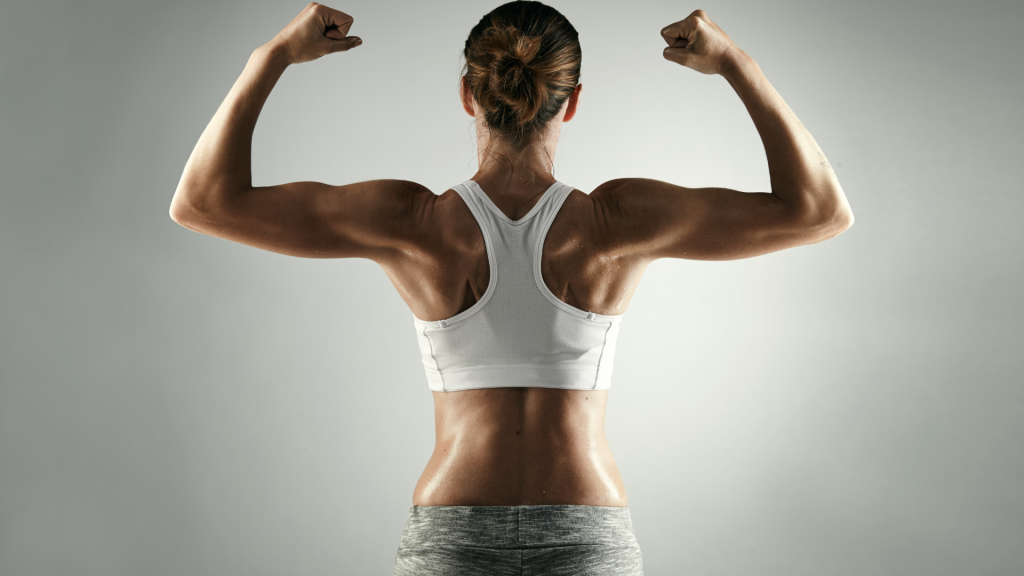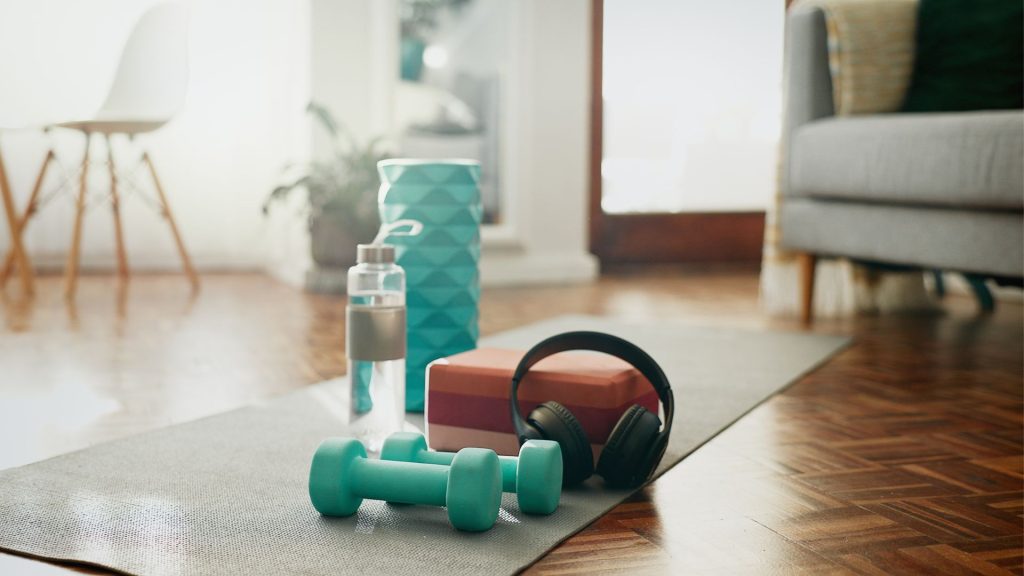
Functional Fitness for Women: Exercises That Enhance Everyday Movements
In recent years, there’s been a noticeable shift in the fitness world. Gone are the days when gym-goers were focused solely on aesthetics or trying to fit into a specific body type. Today, more and more women are embracing a holistic approach to fitness – one that prioritises functional movements that directly impact and improve everyday activities.
Functional fitness is the concept of training the body for real-life movements, making everyday tasks easier, safer and more efficient. Think of it as preparing your body to perform at its best during day-to-day activities like lifting shopping bags, carrying children, gardening, walking the dog or even simply getting up from a chair. The goal is to move better, feel stronger and prevent injuries by enhancing the way we use our bodies in real-life situations.
Whether you’re doing chores around the house, picking up something off the ground or lifting heavy bags, functional fitness exercises improve your balance, mobility and overall strength. So let’s have a look at my top functional exercises every woman should incorporate into her fitness routine, and explore why functional fitness is taking the spotlight.
What Is Functional Fitness?
Functional fitness focuses on exercises that mimic movements used in everyday life. The aim is to strengthen the muscles and improve the coordination required to perform tasks like bending, lifting, twisting and walking without pain or discomfort. By training your body to move efficiently, you’re not only improving athletic performance but also making daily tasks easier and more comfortable.
Incorporating functional fitness into your workout routine helps improve mobility, balance, and core stability – three factors that directly impact your daily life. These exercises can also help prevent injury by building strength in muscles and joints that are often neglected during traditional gym exercises.
Why Functional Fitness is Trending: Women’s Priorities Are Shifting
Women are increasingly moving away from purely aesthetic-based fitness goals and instead are focusing on what helps them feel good and perform well in their daily lives. Functional fitness is gaining popularity because it delivers real-world results – you feel better, move better and prevent injuries as you age.
Additionally, functional fitness exercises support the body’s natural range of motion and help build a foundation of strength that is sustainable for the long term. As more women become aware of the importance of mobility and injury prevention, they’re turning to these foundational movements to not only boost strength but also to combat the effects of ageing.
Key Functional Fitness Exercises for Women
These exercises work multiple muscle groups at once and help build strength, mobility and stability.
1. Squats: The Queen of Functional Movements
Squats are the ultimate functional exercise because they mimic one of the most common daily actions – sitting down and standing up. Whether you’re getting up from a chair or picking something up from the floor, squats help you build strength in your legs, hips and core.
How to Do It:
- Stand with your feet shoulder-width apart, toes slightly turned out.
- Keeping your chest lifted, bend at the knees and hips as if you’re sitting back into a chair.
- Lower your hips until your thighs are parallel to the ground (or as low as you can comfortably go).
- Push through your heels to stand back up to the starting position.
Why It’s Functional: Squats engage the muscles responsible for bending and lifting in everyday life. They’re crucial for lower body strength, core stability, and mobility in the hips and knees. Plus, squats activate multiple muscle groups – quads, hamstrings, glutes and core – making them one of the most efficient exercises you can do.
2. Lunges: Enhancing Balance and Stability
Lunges are another excellent functional movement that mimics walking, climbing stairs, or picking up objects from the ground. They help improve your balance, coordination and lower body strength.
How to Do It:
- Stand tall with feet hip-width apart.
- Step forward with one leg and lower your body until both knees are bent at about 90 degrees.
- Your back knee should hover just above the floor, and your front knee should stay aligned with your ankle.
- Push through the heel of your front foot to return to the starting position.
- Repeat on the other leg.
Why It’s Functional: Lunges help with balance and stability by engaging muscles in your legs, hips and core. They train the body to move in multidirectional ways, which is essential for real-life activities like walking, running and navigating uneven terrain.
3. Planks: Strengthening the Core
A strong core is the foundation for all functional movement. Planks engage the muscles of the abdominals, back, shoulders and hips, providing the stability needed to perform everything from lifting objects to maintaining good posture during daily tasks.
How to Do It:
- Start in a forearm plank position, with your elbows directly under your shoulders and your body in a straight line from head to heels.
- Engage your core and hold the position for 20-60 seconds, depending on your ability.
- Keep your neck neutral and avoid letting your hips sag or pike up.
Why It’s Functional: The core is involved in almost every movement we make, from bending and twisting to maintaining posture. Planks are one of the best ways to build core strength and stability, which directly affects how you move during daily tasks. A strong core also supports the lower back, helping to prevent injuries and back pain.
4. Deadlifts: Building Strength for Lifting and Carrying
Deadlifts are essential for building strength in the back, hips and legs, and they mirror the action of bending down to pick something up off the floor. Proper form is crucial, as it helps teach the body to lift with its legs and hips – not the back – preventing unnecessary strain and potential injury.
How to Do It:
- Stand with your feet hip-width apart, with a slight bend in the knees and a weight in front of you.
- Keep your back flat and chest lifted as you hinge at the hips to lower the weight toward the floor.
- Push through your heels and engage your glutes to lift the weight back up, returning to the standing position.
- Focus on hinging from your hips, not bending from your back.
Why It’s Functional: Deadlifts mimic the action of lifting heavy items, such as boxes, groceries or furniture. By strengthening the muscles used in these movements, you reduce the risk of injury and build functional strength that makes everyday activities easier.
5. Step-Ups: Improving Lower Body Strength and Mobility
Step-ups simulate the action of climbing stairs or stepping up onto a curb. This functional exercise helps build strength in the legs and glutes while improving balance and coordination.
How to Do It:
- Stand in front of a bench or sturdy elevated surface.
- Step one foot onto the surface, pressing through the heel to lift your body up.
- Bring the other foot up to join it, then step down one foot at a time.
- Repeat on the other leg.
Why It’s Functional: Step-ups train the body to perform movements similar to those we do daily, like walking up stairs or stepping over obstacles. It’s a great exercise for enhancing lower body strength and stability.
Why Functional Fitness Is So Important for Women
As we age, we lose muscle mass and mobility, which can make daily tasks more difficult and increase the risk of injury. Functional fitness helps combat these effects by improving strength, balance and mobility in a way that directly enhances our ability to perform everyday tasks.
Women, in particular, benefit from functional fitness because it supports bone health, muscle tone and joint stability, all of which are critical for preventing osteoporosis, arthritis and other age-related conditions. Plus, it helps with posture, which is essential for reducing back and neck pain.
By incorporating functional movements like squats, lunges, planks and deadlifts into your routine, you can improve your strength and mobility, prevent injuries and feel more capable in your daily life. In other words, functional fitness is the key to living life to the fullest, whether you’re lifting your kids, carrying heavy bags or simply walking with ease.
Final Thoughts: Functional Fitness Is a Game-Changer
Functional fitness isn’t just about lifting heavy weights or running marathons – it’s about training your body to move better and feel stronger in everyday situations. Women who focus on functional movements are not only improving their performance in their chosen exercise but also enhancing their quality of life outside of it.
So, the next time you work out, ask yourself: How can this movement make my life easier? Because, in the end, fitness is about more than just how you look—it’s about how you move, how you feel and how you experience the world around you.
As always, any questions please do get in touch.
Caroline x



